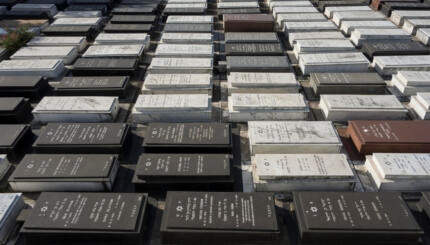Tami was 35 when she died. Cancer. Ovarian. She started chemo in December, I officiated at her wedding in March and in September she died. She was my friend. My best friend from college. She was the kind of friend I could talk to every day or not for months and it didn’t matter. She was the family I chose. And when she was gone, I was bereft.
Once Tami was gone, life returned to normal…on the outside. It was soon forgotten that someone precious to me had just died. On the inside I was grieving. On the inside I was wrestling with the truly disorienting thing of her death — the uncanny, unshakeable feeling of, “that could have been me.” Why Tami got cancer and died and I did not is an unknowable mystery that left me confronting my own mortality and startled to my core.
READ: The Phases of Jewish Bereavement
Jewishly, though, I wasn’t a mourner. Jewish tradition says you only mourn for first degree relations: parent, sibling, spouse or child. So I didn’t sit shiva, the Jewish mourning ritual where people from your community visit with you, feed you, take care of you, listen to stories and share memories of the deceased. This ritual also provides an opportunity for mourners to say Kaddish, a prayer said praising God in memory of the deceased. I didn’t do kriah where you tear a black ribbon and wear it. The ribbon represents your heart which is also torn. By wearing it, your insides and your outsides match. I didn’t wear black, I didn’t cover the mirrors, I didn’t do any of it.
READ: Jewish Death and Mourning 101
These mourning rituals were initially developed to help the soul of the deceased. Though they can be comforting for the living, their original design was to usher the spirit to its eternal resting place. Historically, this sacred task was given to family. Friends and community members would comfort those doing this work.
But today, our relationships with one another have changed; friends can be like family and family, sometimes, can be like strangers. Given that we connect differently than we once did, perhaps there is room for one who lost a friend in the circle of traditional mourners.
As I look back on it, I wish I had used our traditions; sat shiva, worn a ribbon and mourned. Today, the rituals of death are for the living as much or even more than for the deceased. By extending these rituals to non-traditional mourners, our tradition had the ability to wrap them up in the comfort of a tradition that has practiced consoling the bereaved for millennia.


